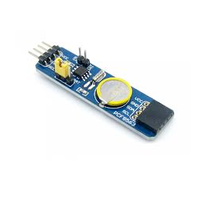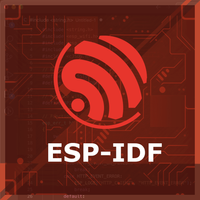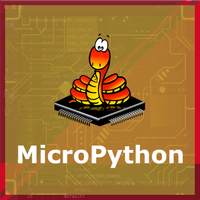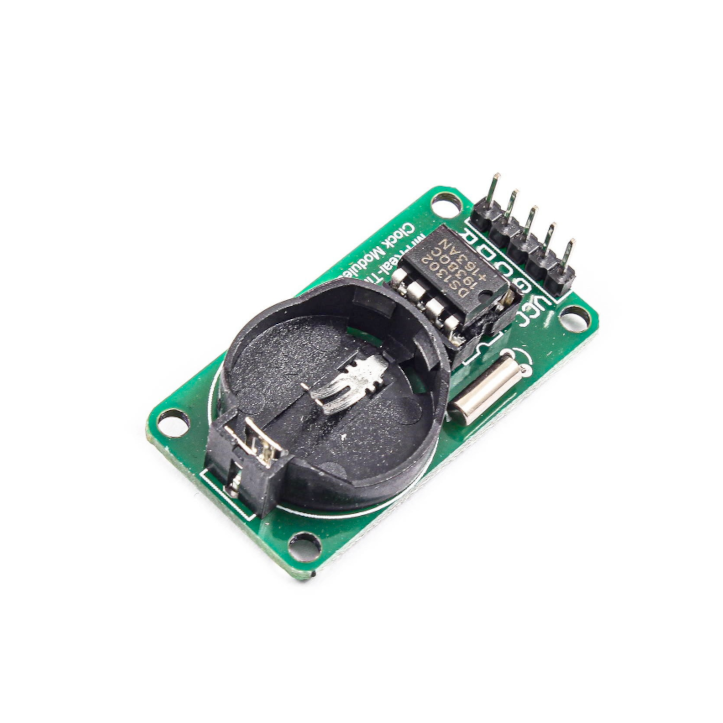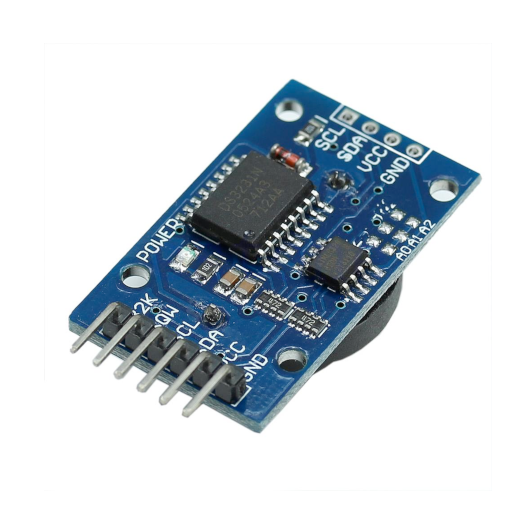ESP32 PCF8563 Real-Time Clock (RTC) Pinout, Wiring, ESP32 and more
Overview
The PCF8563 is a low-power real-time clock/calendar with I2C interface, offering timekeeping functions, programmable clock output, alarm and timer features, and operating over a wide voltage range, making it ideal for portable and battery-powered applications.
About PCF8563 Real-Time Clock (RTC)
The PCF8563 is a CMOS-based real-time clock (RTC) and calendar designed for ultra-low power applications. It provides complete timekeeping functions, including year, month, day, weekday, hours, minutes, and seconds, along with a century flag. Unlike the DS1307, the PCF8563 operates over a wider voltage range (1.0V – 5.5V) and offers lower power consumption, making it ideal for battery-powered applications.
⚡ Key Features
- Low Power Consumption – Optimized for battery-operated devices.
- Wide Voltage Range – Operates from 1.0V to 5.5V, broader than DS1307.
- Programmable Clock Output – Provides flexible timing and clock generation.
- Alarm & Timer Functions – Supports event triggering and scheduling.
- Integrated Oscillator Capacitor – Reduces external component requirements.
With its power efficiency and advanced features, the PCF8563 is a great choice for portable, low-power, and precision timekeeping applications. 🚀
Where to Buy PCF8563 Real-Time Clock (RTC)



Prices are subject to change. We earn from qualifying purchases as an Amazon Associate.
PCF8563 Datasheet and Technical Specifications
PCF8563 Pinout Diagram
The VCC pin is used to supply power to the sensor, and it typically requires 3.3V or 5V (refer to the datasheet for specific voltage requirements). The GND pin is the ground connection and must be connected to the ground of your ESP32.
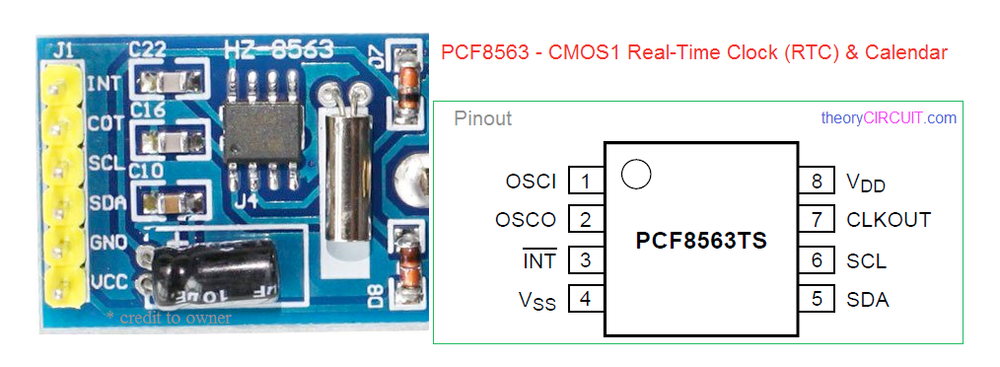
The PCF8563 pinout is as follows:
- OSCI: Oscillator input; connect to a 32.768 kHz crystal.
- OSCO: Oscillator output; connect to a 32.768 kHz crystal.
- INT: Interrupt output; open-drain, active low.
- SCL: Serial Clock Line for I2C communication.
- VSS: Ground connection.
- SDA: Serial Data Line for I2C communication.
- CLKOUT: Clock output; programmable frequency.
- VDD: Power supply input (1.0V to 5.5V).
PCF8563 Wiring with ESP32
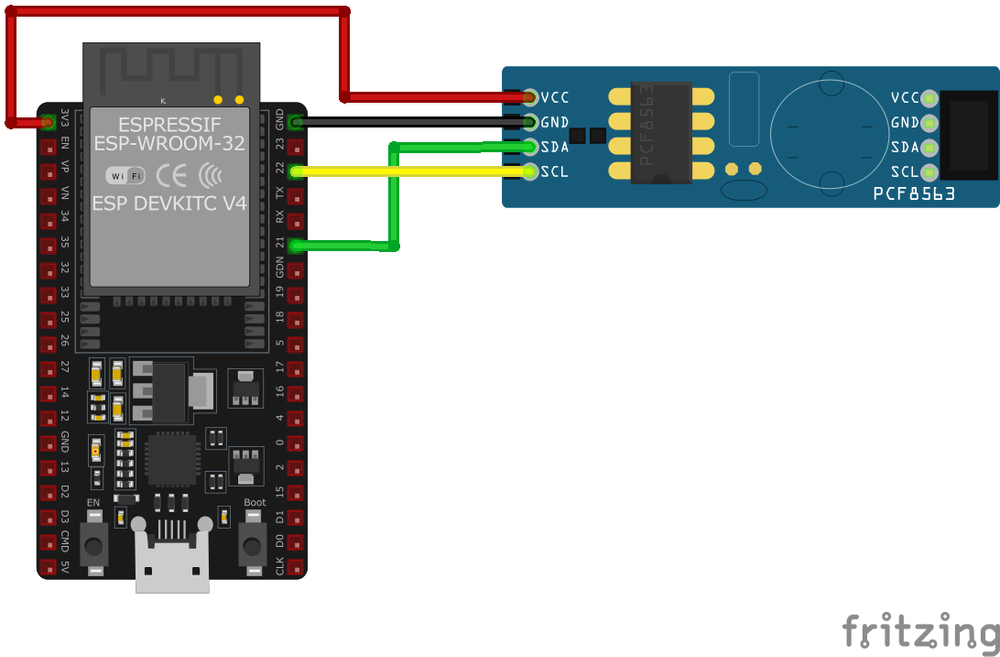
VDD to a 3.3V or 5V power supply, VSS to ground, SDA to the microcontroller's I2C data pin, and SCL to the I2C clock pin. Attach a 32.768 kHz crystal between OSCI and OSCO. The INT pin can be connected to a digital input on the microcontroller if interrupt functionality is required. Optionally, the CLKOUT pin can be used to provide a programmable clock signal to other components.PCF8563 Troubleshooting Guide
Common Issues
⏰ RTC Not Advancing Time Correctly
Issue: The PCF8563 RTC module displays a constant time or advances time incorrectly.
Possible causes include insufficient power supply, incorrect wiring, or a defective module.
Solution: Ensure that the module is connected to a stable power source, with VCC connected to 3.3V or 5V (depending on your module) and GND to ground. Verify that the SDA and SCL pins are correctly connected to the appropriate I2C pins on the microcontroller. If the problem persists, consider replacing the PCF8563 module, as some units may be faulty.
⚠️ Incorrect or Corrupted Date and Time Display
Issue: The PCF8563 module displays incorrect or corrupted date and time information.
Possible causes include improper initialization, incorrect data retrieval methods, or communication errors.
Solution: Ensure that the RTC is properly initialized in your code, setting the correct time and date during setup. Use reliable libraries and functions to set and retrieve time data. Verify that the communication between the microcontroller and the RTC is functioning correctly, and consider implementing error-checking mechanisms to detect and handle communication issues.
🔥 RTC Module Overheating
Issue: The PCF8563 module becomes excessively hot during operation.
Possible causes include incorrect power connections, short circuits, or defective components.
Solution: Double-check all power connections to ensure they are correct, with VCC connected to the appropriate voltage and GND to ground. Inspect the module and wiring for any signs of short circuits or solder bridges. If the module continues to overheat, it may be defective and should be replaced.
🔄 Time Resets After Power Loss
Issue: The PCF8563 RTC loses track of time after a power cycle.
Possible causes include a missing or depleted backup battery, or incorrect wiring of the backup power supply.
Solution: Install a backup battery (e.g., a CR2032 coin cell) to the appropriate pins to maintain timekeeping during power loss. Ensure that the battery is fresh and properly connected. Verify that the module is configured to switch to the backup battery when the main power is unavailable.
Debugging Tips
🔍 Serial Monitor
Use the Serial Monitor to check for error messages and verify the sensor's output. Add debug prints in your code to track the sensor's state.
⚡ Voltage Checks
Use a multimeter to verify voltage levels and check for continuity in your connections. Ensure the power supply is stable and within the sensor's requirements.
Additional Resources
PCF8563 Code Examples
Arduino Example
#include <Wire.h>
#include <Rtc_Pcf8563.h>
Rtc_Pcf8563 rtc;
void setup() {
Serial.begin(9600);
Wire.begin(21, 22); // SDA: GPIO21, SCL: GPIO22
rtc.initClock();
rtc.setDate(4, 12, 2023); // DD, MM, YYYY
rtc.setTime(14, 30, 0); // HH, MM, SS
}
void loop() {
Serial.print("Time: ");
Serial.print(rtc.getHour());
Serial.print(":");
Serial.print(rtc.getMinute());
Serial.print(":");
Serial.println(rtc.getSecond());
Serial.print("Date: ");
Serial.print(rtc.getDay());
Serial.print("/");
Serial.print(rtc.getMonth());
Serial.print("/");
Serial.println(rtc.getYear());
delay(1000);
}Rtc_Pcf8563 library and the specified pin configuration (SDA: GPIO21, SCL: GPIO22). In the setup(), the RTC is initialized and the date and time are set. The loop() retrieves and prints the current time and date to the Serial Monitor every second.ESP-IDF Example
#include <stdio.h>
#include "driver/i2c.h"
#include "pcf8563.h"
#define I2C_MASTER_SCL_IO 22
#define I2C_MASTER_SDA_IO 21
void app_main(void) {
i2c_config_t i2c_config = {
.mode = I2C_MODE_MASTER,
.sda_io_num = I2C_MASTER_SDA_IO,
.scl_io_num = I2C_MASTER_SCL_IO,
.sda_pullup_en = GPIO_PULLUP_ENABLE,
.scl_pullup_en = GPIO_PULLUP_ENABLE,
.master.clk_speed = 100000
};
i2c_param_config(I2C_NUM_0, &i2c_config);
i2c_driver_install(I2C_NUM_0, I2C_MODE_MASTER, 0, 0, 0);
pcf8563_init(I2C_NUM_0);
pcf8563_set_datetime(2023, 12, 4, 14, 30, 0);
while (1) {
pcf8563_datetime_t now;
pcf8563_get_datetime(&now);
printf("Time: %02d:%02d:%02d\n", now.hour, now.minute, now.second);
printf("Date: %04d/%02d/%02d\n", now.year, now.month, now.day);
vTaskDelay(pdMS_TO_TICKS(1000));
}
}pcf8563_set_datetime(). The current time and date are fetched using pcf8563_get_datetime() and printed to the console every second.ESPHome Example
i2c:
sda: GPIO21
scl: GPIO22
time:
- platform: pcf8563
id: pcf8563_time
update_interval: 1s
sensor:
- platform: custom
lambda: |-
auto my_sensor = new PCF8563Sensor(id(pcf8563_time));
return {my_sensor};
sensors:
- name: "PCF8563 Date and Time"time platform fetches time and date information at 1-second intervals, and a custom sensor displays the data in a human-readable format.PlatformIO Example
platformio.ini
[env:esp32dev]
platform = espressif32
board = esp32dev
framework = arduino
monitor_speed = 115200PlatformIO Example Code
#include <Wire.h>
#include <Rtc_Pcf8563.h>
Rtc_Pcf8563 rtc;
void setup() {
Serial.begin(115200);
Wire.begin(21, 22); // SDA: GPIO21, SCL: GPIO22
rtc.initClock();
rtc.setDate(4, 12, 2023); // DD, MM, YYYY
rtc.setTime(14, 30, 0); // HH, MM, SS
}
void loop() {
Serial.print("Time: ");
Serial.print(rtc.getHour());
Serial.print(":");
Serial.print(rtc.getMinute());
Serial.print(":");
Serial.println(rtc.getSecond());
Serial.print("Date: ");
Serial.print(rtc.getDay());
Serial.print("/");
Serial.print(rtc.getMonth());
Serial.print("/");
Serial.println(rtc.getYear());
delay(1000);
}setup(), while the loop() fetches and prints the current time and date every second.MicroPython Example
from machine import I2C, Pin
import time
# PCF8563 I2C address
PCF8563_ADDRESS = 0x51
def bcd_to_decimal(bcd):
return (bcd >> 4) * 10 + (bcd & 0x0F)
def decimal_to_bcd(decimal):
return ((decimal // 10) << 4) | (decimal % 10)
def set_time(i2c, year, month, day, hour, minute, second):
data = [decimal_to_bcd(second), decimal_to_bcd(minute), decimal_to_bcd(hour),
0, decimal_to_bcd(day), decimal_to_bcd(month), decimal_to_bcd(year - 2000)]
i2c.writeto_mem(PCF8563_ADDRESS, 0x02, bytes(data))
def get_time(i2c):
data = i2c.readfrom_mem(PCF8563_ADDRESS, 0x02, 7)
second = bcd_to_decimal(data[0] & 0x7F)
minute = bcd_to_decimal(data[1] & 0x7F)
hour = bcd_to_decimal(data[2] & 0x3F)
day = bcd_to_decimal(data[3] & 0x3F)
month = bcd_to_decimal(data[5] & 0x1F)
year = bcd_to_decimal(data[6]) + 2000
return year, month, day, hour, minute, second
# Initialize I2C
i2c = I2C(0, scl=Pin(22), sda=Pin(21))
# Set initial time
set_time(i2c, 2023, 12, 4, 14, 30, 0)
# Loop to read time
while True:
year, month, day, hour, minute, second = get_time(i2c)
print(f"Time: {hour:02}:{minute:02}:{second:02}, Date: {year:04}/{month:02}/{day:02}")
time.sleep(1)set_time() function initializes the RTC with the specified time and date, while the get_time() function reads and decodes the current time and date. In the loop, the script continuously fetches and prints the current time and date every second.Conclusion
The ESP32 PCF8563 Real-Time Clock (RTC) is a powerful RTC sensor that offers excellent performance and reliability. With support for multiple development platforms including Arduino, ESP-IDF, ESPHome, PlatformIO, and MicroPython, it's a versatile choice for your IoT projects.
For optimal performance, ensure proper wiring and follow the recommended configuration for your chosen development platform.
Always verify power supply requirements and pin connections before powering up your project to avoid potential damage.
